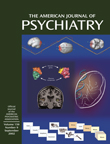Atypical Depression: A Reappraisal
Abstract
OBJECTIVE: The study evaluated the DSM-IV definition of the atypical features specifier for a major depressive episode in major depressive disorder. METHOD: Nonpsychotic patients with major depressive disorder were assessed to determine if the DSM-IV model and decision rules for the atypical features specifier for a major depressive episode could be supported. RESULTS: The five clinical features of the DSM-IV atypical features specifier for a major depressive episode showed weak internal consistency, and the mandatory criterion A feature of mood reactivity did not show specificity in relation to any of the four criterion B accessory symptoms. The more severe the depression, the less likely the patient was to report criterion A and hence to meet criteria for the atypical features specifier. Remodeling the five features favored the personality style descriptor of interpersonal rejection sensitivity as an alternate primary feature. A reformulated model also suggested lifetime panic disorder and social phobia as higher-order determinants of atypical features in major depressive disorder. Additional analyses of criteria suggested that interpersonal rejection sensitivity and leaden paralysis had a phenomenological base in anxiety, that mood reactivity was linked with irritability, and that neither weight gain nor hypersomnia were clearly aligned with anxiety or depression, raising questions about their status as symptoms. CONCLUSIONS: The current definition and modeling of the DSM-IV atypical features specifier for a major depressive episode in major depressive disorder appears problematic. As suggested by earlier descriptions of atypical depression, certain expressions of anxiety may have primacy, and some clinical features associated with the DSM-IV model may be adaptive homeostatic responses rather than pathological symptoms.



